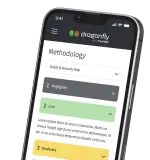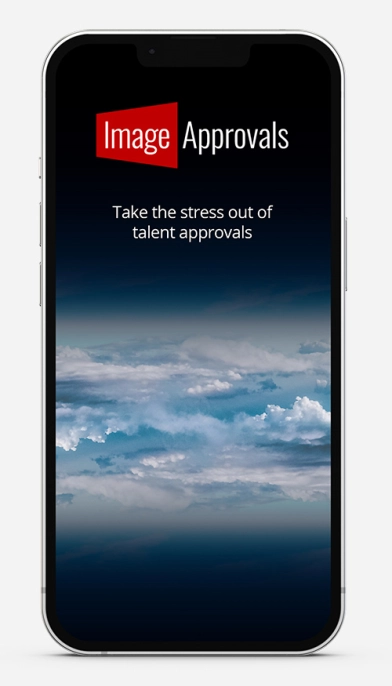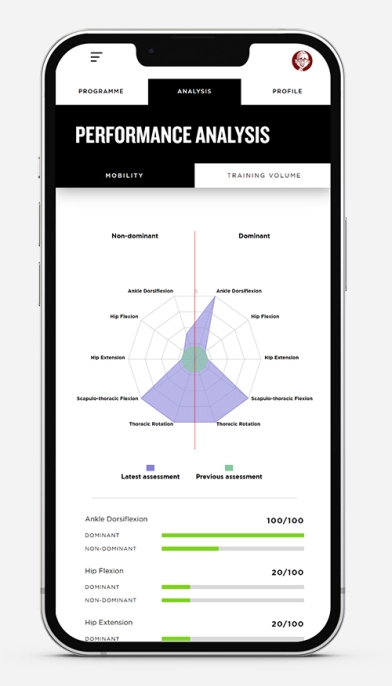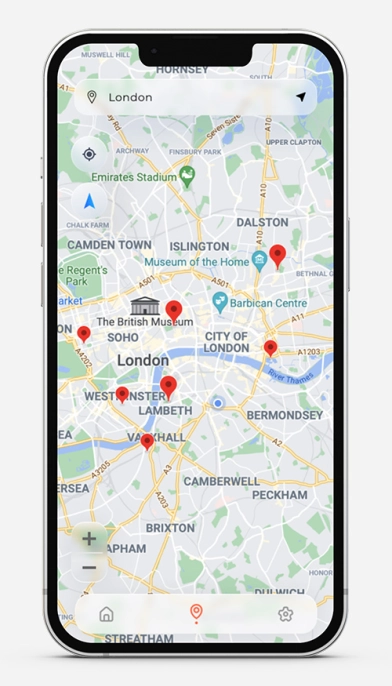(Updated 13/02/2024)
Given the amount of time, energy and money that goes into launching a successful app, do you want to make sure you’re doing everything you can to ensure its success?

Embarking on the app development journey can be as daunting as it is exhilarating, with success often hinging on the foundational step of validating your app idea. In the digital age where competition is fierce and user expectations are high, it’s not enough to simply have a good idea.
The key lies in rigorously testing and refining your concept to meet a genuine market need. This article unveils six pivotal questions that will guide you through validating your app idea, ensuring it not only resonates with your target audience but also stands a strong chance of thriving in the competitive app marketplace. Whether you’re a seasoned developer or a budding entrepreneur, these insights will equip you with the strategies to transform your vision into a market-ready success.
Now, let's get stuck into the six questions.
1. Does your idea add value to the world?

Understanding the intrinsic value your app offers to the world is pivotal in differentiating it in a saturated market. The essence of creating a compelling value proposition lies not just in identifying a gap in the market, but in articulating how your app uniquely fills that gap in a way that resonates with your target audience. This involves a deep dive into the needs your app meets, the features that address these needs, and the tangible benefits that users gain from using your app.
Conducting a need-feature-benefit analysis is a structured way to unpack the value your app provides. Take taxi-app Uber as a case study: its success is largely attributed to its clear understanding of a universal need for convenient transportation, a feature set that directly addresses this need by connecting users with drivers through a few taps on a smartphone, and the benefits of cost-effectiveness, cashless transactions, and swift service. This analysis not only helps in refining your app's core offerings but also in communicating its value in a clear, compelling manner to potential users.
Need: The customer needs to be able to travel from point A to point B.
Feature: An app that connects the customer to taxi drivers, allowing them to book directly.
Benefit: Cost effective, no need to carry cash, can be picked up within minutes and can get to their destination quickly.
When evaluating your app's value proposition, it's crucial to ask yourself if your app solves a significant problem, enhances user experiences, introduces a new way of doing things, or offers savings—be it in time, money, or resources. Moreover, presenting these findings through accessible mediums like videos can further aid in illustrating your app's value, thereby attracting and educating potential users about the unique solutions your app presents. By focusing on these aspects, you position your app not just as a tool but as an indispensable resource that enriches users' lives or simplifies their tasks.
If you can identify one or more strong benefits, then there is a good chance that your customers will see the value in what you are offering. We’ve made a video on how to identify your value proposition should you want to know more on this topic.
2. Do you have a clear business objective and business model?

How do you plan to make money if your app adds genuine value? An app can cost thousands of pounds to develop so you want to ensure your idea can sustain itself. Here are a few ways that you might make money from your app:
- Sales via the app store.
- In-app purchases and pay-walls.
- If the value the app brings increases sales of other products/services.
- In-app advertising and sponsorship.
- Data, analytics and insights as a service.
- Software as a service (subscription model).
- Referral commission.
This list is by no means exhaustive, in fact, Oliver Gassmann thinks there are a whopping 55 business models that will revolutionise your business should you want some further reading.
How you make money from your app may change over time, and you might decide to launch an app based on one business model and then change your approach later. For example, you might want to launch a free version of the app initially and then build in premium features once you’ve built up a solid user base.
Consider which revenue model might work for you and estimate how many customers you will need to break even on your startup costs. This will help you to identify whether your idea is profitable enough to sustain itself.
Crafting a solid business model is as critical to your app's success as its development and launch. It's essential to regularly review and adapt your monetization strategy to keep pace with market changes and user preferences. As your app grows and evolves, so should your approach to generating revenue. Engaging with your user base, analyzing performance data, and staying informed about industry trends can provide insights that lead to innovative monetization strategies. Whether it's adjusting your pricing, introducing new in-app purchases, or exploring partnerships for cross-promotion, flexibility and responsiveness to feedback are key.
Remember, the sustainability of your app hinges not just on attracting users but on creating value that keeps them engaged and willing to pay. Continuous experimentation with different revenue models and a keen eye on your app's performance metrics will help you fine-tune your approach. This iterative process of learning and adapting is crucial for finding the most effective way to monetize your app that aligns with your business objectives and user expectations. Ultimately, the goal is to establish a profitable and scalable business model that supports your app's long-term growth and success.
3. Are you clear on the absolute essential feature list?

You want your app to be perfect and have the best launch possible, and it’s tempting to build your app from day one with an exhaustive all-encompassing feature list.
Don’t fall into this trap.
Each new feature you introduce will likely increase the cost to build your app and will delay the go-live date. How can you know which features are most valuable to a user until you’ve launched something to them to play with first? Should you have spent a significant amount of time building a feature that users don’t engage with, or use in the way you might expect, then you’ve created waste.
Instead, keep your feature list lean. Launch a minimum viable product (MVP).
Your ‘minimum viable product’ should deliver enough value to the user for them to use it while also only containing the minimum number of features possible to test your early assumptions.
For example, imagine if you were building a new social media platform. It may seem obvious that you need to build instant messaging functionality for the first version, but what about in-app tools for allowing businesses to advertise on the app? In this example, until you’ve built a decent user base, it’s unlikely that you’ll be able to build advertising tools that businesses would use to advertise to these users. So, there is probably little point in building these advertising tools into the launch version. You’d be much better off launching just the social media tools first and testing that people use and like the app first.
If you’re struggling to decide which features are most important then map your ideas onto an impact-effort matrix:

You map the impact of a solution against the effort to implement it. High-impact, low-effort features go into the top-right quarter and should normally take the highest priority.
Crafting the perfect app requires a focus on delivering core functionalities that meet your users' needs from the outset. Developing a Minimum Viable Product (MVP) is not just about economizing resources; it's a strategic approach to market entry that prioritizes user feedback and agile development. By concentrating on the essentials, you create a foundation for growth that is both scalable and responsive to your audience's evolving demands.
The temptation to include every conceivable feature can be strong, particularly when you envision a comprehensive solution. However, this approach often leads to inflated development costs, extended timelines, and a product overburdened with underutilized features. Instead, a lean feature list guided by an impact-effort matrix lets you objectively assess which functionalities will deliver the most value with the least effort. This prioritization streamlines your development process and accelerates your time to market, enabling you to gather user feedback and iterate more effectively.
As your app gains traction, this feedback becomes invaluable, guiding the development of new features that are genuinely desired by your users. This iterative process fosters a cycle of continuous improvement, where each update is informed by direct user engagement, ensuring that your app remains relevant and competitive. By embracing the MVP approach and focusing on core functionalities, you lay the groundwork for a dynamic, user-centred app that can adapt and grow in alignment with your users' needs.
4. Do you have a post-launch marketing plan?

“Build it, and they will come” is a myth.
Expanding on your post-launch marketing plan, it's crucial to recognize that simply building an app won't guarantee its success without a strategic marketing effort. Insights from recent app marketing case studies in 2024 highlight the diversity and innovation required in today's app promotion strategies. Techniques ranging from leveraging social media platforms like TikTok for user acquisition campaigns to conducting A/B testing for App Store Optimization (ASO) have proven to reduce costs and improve engagement significantly.
Discoverability remains a central challenge in the app market. A comprehensive strategy that includes both ASO and CPI (Cost Per Install) campaigns can significantly enhance an app's visibility. Optimizing every aspect of your app's profile, from keywords to high-quality screenshots, and investing in targeted advertising campaigns can propel your app's ranking and organic user acquisition
It looks like things haven't changed in a long time, as a study by Business Insider found that marketing and discoverability were the toughest problems faced by those launching the app all the way back in 2016!.
Though the way you get traction for your app will vary based on your business model, here are the bare essentials that most apps will require:
- A logo and app icon.
- A website with a clear landing page.
- Compelling sales copy for your app-store listing.
- Run digital marketing campaigns on at least one platform.
- Conversion tracking and remarketing.
- Identify your target traction channel(s).
There are 19 marketing channels that you might use to launch your new app. The right channels for you might depend on your target market, value proposition and business model. Here is an overview of each:
- Targeting blogs.
- Publicity.
- Unconventional PR.
- Search engine marketing.
- Social and display ads.
- Offline ads.
- Search engine optimisation.
- Content marketing.
- Email marketing.
- Viral marketing.
- Engineering as marketing.
- Business development.
- Sales.
- Affiliate programs.
- Existing platforms.
- Trade shows.
- Offline events.
- Speaking Engagements.
- Community building.
These 19 traction channels are covered in more detail by Gabriel Weinberg in his best-selling book Traction. Knowing how you plan to approach your marketing might also affect which features are a priority for your minimum viable product launch.
As you approach the launch of your app, remember that the journey doesn't end there. Developing a solid post-launch strategy is just as crucial as the initial development and validation phases. The reality, as highlighted by historical challenges and modern case studies, is that visibility in a crowded marketplace demands continuous effort and innovation. Once novel marketing strategies, like leveraging social media platforms or optimizing your app store presence, are now baseline necessities.
The landscape of app marketing is ever-evolving, with new platforms and technologies offering fresh avenues to connect with your audience. As such, staying informed and adaptable is key. Consider exploring emerging marketing channels and tools that can offer your app a competitive edge. Additionally, engaging with your user base through feedback loops can provide invaluable insights that inform ongoing improvements and marketing strategies.
Finally, measuring the effectiveness of your marketing efforts through analytics and conversion tracking is essential for understanding what works and what doesn't. This data-driven approach allows you to refine your strategy over time, ensuring that your app reaches its target audience and delivers ongoing value that encourages user retention and advocacy.
In essence, the launch of your app marks the beginning of a new chapter where strategic marketing, continuous improvement, and user engagement become the pillars of sustained success.
5. Have you researched the competition?

Exploring the competitive landscape is essential, not just for identifying gaps in the market but for understanding the dynamics that govern user preferences and industry standards. While it's a rarity for an app concept to be entirely novel, originality isn't the only pathway to success. Delving into your competitors' strategies offers invaluable insights into effective practices and potential areas for innovation.
Begin by engaging directly with your competitors' products. Create accounts on their apps to experience their user interface and functionality first-hand. Pay close attention to the aspects that enhance the user experience and consider how these can be adapted or improved upon in your project. Equally, identify any shortcomings or user pain points, as these represent opportunities for your app to excel.
Expanding on your value proposition, endeavour to dissect the unique selling points of your rivals. Understand the basis of their market appeal—cost-efficiency, superior functionality, or exceptional user support—and contemplate how your app can offer something distinctively compelling.
Customer feedback is a goldmine of insights into the strengths and weaknesses of competitor apps. Explore app store reviews and conduct online searches to gather user opinions. This feedback can reveal what users truly value in an app and pinpoint areas where competitors may fall short. Armed with this knowledge, you can tailor your app to meet user expectations better and carve out a unique niche in the market.
Remember, competitor analysis is not a one-off task but a continuous process of learning and adaptation. Staying attuned to market trends and evolving user needs ensures your app remains competitive and responsive to the changing landscape.
6. Have you asked friends or colleagues what they think about the idea?

Gathering insights from friends and colleagues can be an invaluable step in refining your app concept, given their potential to offer honest feedback and innovative suggestions. However, the challenge lies in encouraging them to provide candid input without the fear of offending. Creating an environment where honest feedback is not just welcomed but encouraged is crucial.
Encourage what's known as 'ugly baby' feedback—a term that underscores the importance of honest criticism, even when it's hard to hear. Just as few would openly comment on a baby's lack of cuteness, people may hesitate to critique your idea for fear of offending you. Address this head-on by asking for their unvarnished opinions with the assurance that you value their honesty over placation.
Be prepared for constructive criticism. When someone presents an "it won't work because" argument, view it not as a setback but as a challenge to overcome. Historical instances abound where seemingly insurmountable obstacles were navigated with innovative solutions. Elon Musk’s SpaceX venture is a prime example, turning the improbable task of launching a sports car into space into a reality.
Every piece of feedback, especially the critiques, is an opportunity for growth and improvement. Early detection of potential objections or flaws in your app concept allows you to address these issues proactively. This enhances your product and establishes a formidable barrier against competitors who may not have foreseen these challenges.
Engaging your network in this way not only enriches your app's development with diverse perspectives but also invests them in the success of your project, creating a supportive community around your vision.
Conclusion
In wrapping up, validating your app idea is undeniably a crucial step in the journey towards market success. From ensuring your app adds genuine value to the world to crafting a solid post-launch marketing plan, the insights shared here serve as a comprehensive guide to turning your vision into a thriving reality. Remember, the essence of a successful app lies not just in its innovative concept but in its ability to effectively meet user needs and stand out in a competitive landscape.
As you embark on this exciting journey, consider each of these six questions as milestones towards achieving your goal. Reflect on your app's unique value, solidify your business model, prioritise essential features, craft a compelling marketing strategy, understand your competition, and seek honest feedback from your network. These steps are not just tasks to be checked off but opportunities to refine and enhance your app's potential for success.
Validation is more than a phase; it's a mindset that encourages continuous learning and adaptation. Embrace it fully, and you'll find yourself launching an app and nurturing a product that resonates with users and withstands the test of time. The road ahead may be challenging, but with rigorous validation, your app stands a better chance of surviving and thriving in the dynamic app marketplace.
As you navigate through the intricate process of validating your app idea, partnering with a seasoned and innovative development team can make all the difference. That's where Scorchsoft shines. With over a decade of experience in bringing complex web and mobile applications to life, we are more than just developers; we're your strategic partners in innovation.
Our expertise in crafting bespoke 'Software as a Service' products, automating back-end and front-end portals, and developing engaging B2B mobile apps ensures your idea takes off and soars in the competitive digital landscape. Contact us to take the first step towards transforming your app idea into a market success story.




